Reviewed: 28
This is a practical guide to Surface Science for researchers working in the Consumer Products Industry.
In this all-new guide you’ll learn all about:
Let’s dive right in.
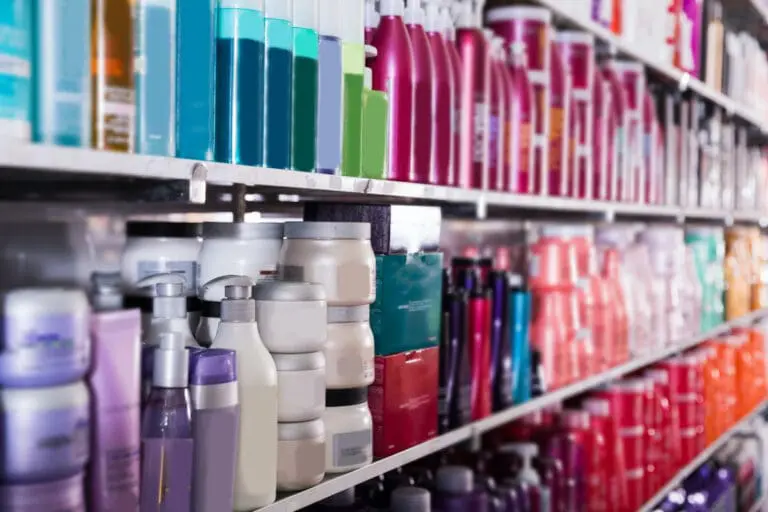
Consumer products leverage diverse surface properties to achieve specific functionalities. Food packaging materials, for example, require water resistance, grease resistance, and antimicrobial properties to extend shelf life and minimize waste. To enhance clothing and textile durability and ease of care, fabrics are often treated for water resistance, stain resistance, and wrinkle resistance.
Non-stick cookware utilizes surface coatings to prevent food from sticking, even when cooked without oil or butter. Anti-scratch glasses are coated with a hard, durable material that resists scratches, extending their lifespan and maintaining their appearance. Windows benefit from a titanium dioxide coating that breaks down dirt and grime under sunlight, simplifying cleaning.
These examples showcase how manipulating surface characteristics allows for achieving desired outcomes across a wide range of consumer products.
We use the important surface properties below to understand the behavior of Consumer Products products and improve their quality.
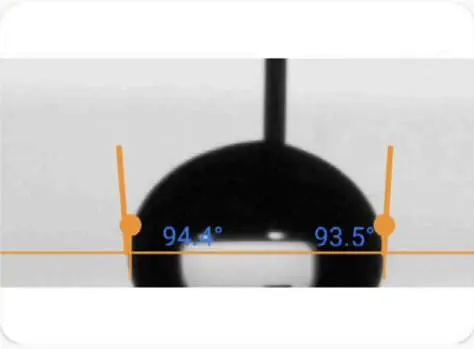
Young – Laplace Method
Polynomial Method
Dynamic Contact Angle
Ideally, when we place a drop on a solid surface, a unique angle exists between the liquid and the solid surface. We can calculate the value of this ideal contact angle (the so-called Young’s contact angle) using Young’s equation. In practice, due to surface geometry, roughness, heterogeneity, contamination, and deformation, the contact angle value on a surface is not necessarily unique but falls within a range. We call this range’s upper and lower limits the advancing contact angle and the receding contact angle, respectively. The values of advancing and receding contact angles for a solid surface are also very sensitive. They can be affected by many parameters, such as temperature, humidity, homogeneity, and minute contamination of the surface and liquid. For example, the advancing and receding contact angles of a surface can differ at different locations.
Practical surfaces and coatings naturally show contact angle hysteresis, indicating a range of equilibrium values. When we measure static contact angles, we get a single value within this range. Solely relying on static measurements poses problems, like poor repeatability and incomplete surface assessment regarding adhesion, cleanliness, roughness, and homogeneity.
In practical applications, we need to understand a surface’s liquid spreading ease (advancing angle) and removal ease (receding angle), such as in painting and cleaning. Measuring advancing and receding angles offers a holistic view of liquid-solid interaction, unlike static measurements, which yield an arbitrary value within the range.
This insight is crucial for real-world surfaces with variations, roughness, and dynamics, aiding industries like cosmetics, materials science, and biotechnology in designing effective surfaces and optimizing processes.
Learn how Contact Angle measurement is done on our Tensiometer
For a more complete understanding of Contact Angle measurement, read our Contact Angle measurement: The Definitive Guide
This property measures the force that acts on the surface of a liquid, aiming to minimize its surface area.
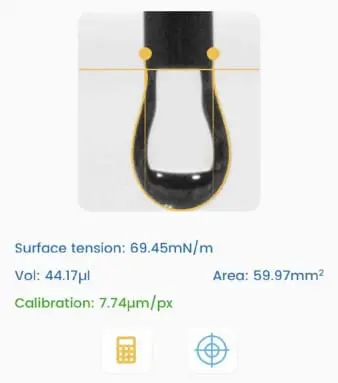
Dynamic Surface Tension
Dynamic surface tension differs from static surface tension, which refers to the surface energy per unit area (or force acting per unit length along the edge of a liquid surface).
Static surface tension characterizes the equilibrium state of the liquid interface, while dynamic surface tension accounts for the kinetics of changes at the interface. These changes could involve the presence of surfactants, additives, or variations in temperature, pressure, and composition at the interface.
Dynamic surface tension is essential for processes that involve rapid changes at the liquid-gas or liquid-liquid interface, such as droplet and bubble formation or coalescence (change of surface area), behavior of foams, and drying of paints (change of composition, e.g., evaporation of solvent). We measure it by analyzing the shape of a hanging droplet over time.
Dynamic surface tension applies to various industries, including cosmetics, coatings, pharmaceuticals, paint, food and beverage, and industrial processes, where understanding and controlling the behavior of liquid interfaces is essential for product quality and process efficiency.
Learn how Surface Tension measurement is done on our Tensiometer
For a more complete understanding of Surface Energy measurement, read our Surface Tension measurement: The Definitive Guide
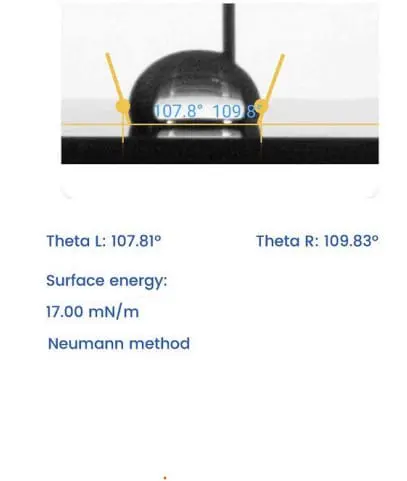
Learn how Surface Energy measurement is done on our Tensiometer
For a more complete understanding of Surface Energy measurement, read our Surface Energy measurement: The Definitive Guide
The sliding angle measures the angle at which a liquid film slides over a solid surface. It is commonly employed to assess the slip resistance of a surface.
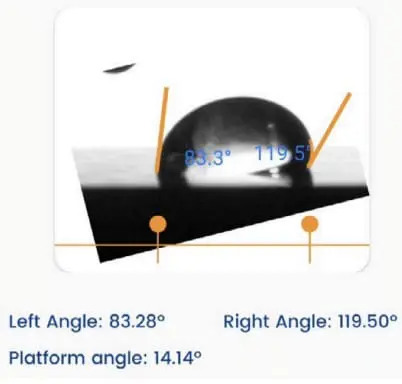
Learn how Sliding Angle measurement is done on our Tensiometer
For a more complete understanding of Sliding Angle measurement, read our Sliding Angle Measurement: The Definitive Guide
Within the Consumer Products industry, several case studies exemplify the advantages of conducting surface property measurements.
Fluctuating oil prices presented a major challenge for manufacturers who relied on oil-based adhesives. This forced them to seek alternative solutions. Researchers identified natural rubber latex (NRL) water-based adhesive as a promising alternative. To ensure its successful implementation, they investigated the peel and holding strengths of various paper backings on stainless steel and glass substrates. Through surface energy and contact angle experiments on different backing papers, they discovered that mahjong paper had the highest surface energy (59.50 mN/m), making it an ideal substrate for optimal adhesive wetting.


Challenge: Food products sticking to their packaging can increase the risk of harmful package compounds migrating into the food or unwanted off-flavors being absorbed.
Solution: Researchers identified that to address this, packaging films need to be both hydrophobic (water-repelling) and have low surface energy. However, the same film also needs to adhere well to the outer layer of the packaging. Therefore, to improve adherence to other plastic layers, they decided to increase the surface energy of the packaging film. They employed the widely used corona discharge treatment (CDT) for this purpose. To assess the level of adhesion achieved, the R&D team measured the contact angle of the treated film, which helps determine how much the surface energy has increased by introducing polar groups to the surface.
An eyewear company faced a fogging problem with their sports goggles, hindering athletes’ visibility during activities. To combat this, they actively developed hydrophobic coatings using contact angle measurements. Their aim was to achieve an optimal angle that minimized water adhesion, the key factor in fog formation. By minimizing adhesion, they successfully created anti-fog eyewear, significantly improving user experience across various sports.


PDMS, despite being hydrophobic, surprisingly absorbs up to ~30 mM of water upon contact. Researchers addressed this challenge by measuring advancing and receding contact angles of water droplets on cross-linked PDMS. They discovered that PDMS adapts to water by enriching the interface with free oligomers, leading to a net decrease in surface tension. This crucial information helps us develop strategies to minimize water affinity and improve the performance of PDMS materials.
To address the challenge of poor adhesion, the screen protector manufacturer’s technical team actively measured the surface energy of different materials. This allowed them to select materials with compatible surface energies, ensuring strong adhesion between the screen and the protector. This proactive approach significantly enhanced the reliability of their screen protectors, directly meeting consumer expectations for durable and long-lasting device protection.

If you are interested in implementing these or any other applications, please contact us.
In an industry where precision reigns supreme, where do Consumer Products manufacturers turn to ensure their products can survive scrutiny? The answer lies in standards and guidelines: the compass that guides cosmetics manufacturers through the complex maze of quality and performance.
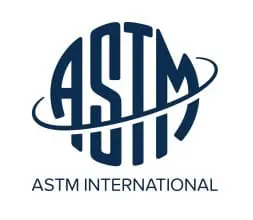
This standard explains the contact angle measurement on a drop of liquid which is applied to a coated surface, substrate, or preformed disk of pigment. It is notable that this standard is only applicable to advancing contact angles. This standard can be utilized for characterizing the wettability of surfaces.
ASTM D5946-17 Standard Test Method for Corona-Treated Polymer Films Using Water Contact Angle Measurements
This standard is identical to ISO 15989. This test method explains the contact angle measurement of water droplets on corona-treated polymer film surfaces. The electrical discharge treatment, such as corona treatment increases the wetting tension of a polymer film. Therefore it is possible to relate the contact angle of a polymer film surface to its ability to accept and retain inks, coatings, adhesives, etc.
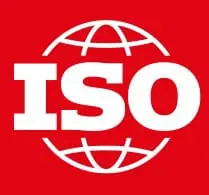
Plastics/rubber (Polymer dispersions and rubber latices (natural and synthetic)) Determination of surface tension: This standard provides the method for surface tension measurements of polymer dispersions and rubber latices (natural and synthetic). The standard offers two methods for surface tension determination named Method A and Method B.
We hope this guide showed you how to apply surface science in cosmetics industry.
Now we’d like to turn it over to you:
Droplet Lab was founded in 2016 by Dr. Alidad Amirfazli, faculty member at York University, and two of his researchers, Dr. Huanchen Chen and Dr. Jesus L. Muros-Cobos.
Dropletlab © 2024 All Rights Reserved.